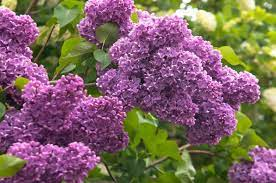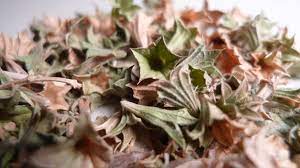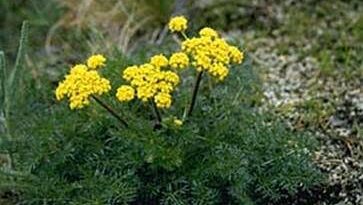20 Medicinal Health Benefits Of Lilac (Syringa vulgaris)
Lilac, scientifically known as Syringa vulgaris, is a deciduous shrub or small tree celebrated for its fragrant and colorful blooms. Native to the Balkan Peninsula, lilacs have become beloved ornamental plants in gardens and landscapes around the world.
Known for their stunning clusters of tubular-shaped flowers, lilacs bloom in various hues, including shades of purple, violet, blue, pink, and white. The blossoms typically emerge in spring, creating a visually enchanting display and emitting a sweet, nostalgic fragrance that permeates the air.
Lilacs are characterized by their opposite, heart-shaped leaves and woody stems. They are relatively low-maintenance plants, thriving in well-drained soil and benefiting from ample sunlight. Lilac varieties vary not only in flower color but also in size and growth habit, with some cultivars reaching heights of up to 15 feet.
Apart from their aesthetic appeal, lilacs hold sentimental value for many, often evoking memories of gardens in bloom and the arrival of spring. The flowers are popular choices for cut arrangements, perfumes, and potpourris, further enhancing their cultural significance.
Lilacs have inspired poems, literature, and art, symbolizing love, renewal, and the fleeting beauty of life. Additionally, certain cultures associate lilacs with the celebration of Easter and the arrival of warmer weather.
While primarily grown for ornamental purposes, lilacs do not have significant traditional medicinal uses. However, some cultures have explored the potential antibacterial properties of certain lilac compounds.
Overall, Syringa vulgaris stands as a timeless and cherished plant, contributing to the beauty of gardens and landscapes while invoking a sense of nostalgia and appreciation for the fleeting but delightful moments of the spring season.
The Botanical Description of Lilac
1. Inflorescence Structure: Lilacs, scientifically known as Syringa, are renowned for their impressive inflorescence, organized in dense panicles that showcase a myriad of small, fragrant flowers.
2. Leaf Characteristics: Lilac leaves are typically heart-shaped, presenting a lush green foliage that enhances the aesthetic appeal of the plant.
3. Floral Colors: The flowers of Lilacs come in various colors, including shades of purple, violet, pink, and white, creating a visually captivating display.
4. Growth Habit: Lilac shrubs are deciduous and can range in size from small to large, with some varieties reaching significant heights.
5. Fragrance: One of the defining features of Lilacs is their enchanting fragrance, filling the air with a sweet and delicate scent, especially during the blooming season.
6. Bark Texture: The bark of Lilac shrubs is often smooth and grayish, contributing to the overall texture and appearance of the plant.
7. Bloom Time: Lilacs are known for their springtime bloom, with the flowers emerging in clusters, signaling the arrival of the warmer seasons.
8. Root System: Lilacs typically develop a well-established root system, contributing to their resilience and adaptability.
9. Pollination Mechanism: Lilac flowers attract pollinators, including bees and butterflies, through their vibrant colors and alluring fragrance, aiding in reproduction.
The Geographic Distribution of Lilac
1. Europe: Lilacs are native to parts of Southeastern Europe, including the Balkan Peninsula, where they have thrived for centuries.
2. Asia: Beyond Europe, Lilacs are also found in various parts of Asia, including regions like China and Persia, showcasing their adaptability to diverse climates.
3. North America: Lilacs have been introduced and cultivated in North America, with established populations in gardens and landscapes.
4. Himalayan Region: Some Lilac species are found in the Himalayan region, where they add to the region’s floral diversity.
5. New Zealand: Lilacs have also found a home in New Zealand, where they are cultivated for their ornamental value.
6. Australia: In certain parts of Australia, Lilacs are cultivated, contributing to the horticultural landscape.
7. Canada: Lilacs have become a familiar sight in gardens across Canada, where they are cherished for their beauty and fragrance.
8. Middle East: Lilacs have been introduced to parts of the Middle East, adapting to the region’s varying climates.
The Chemical Composition of Lilac
1. Essential Oils: Lilac flowers contain essential oils, contributing to their distinctive fragrance.
2. Terpenes: Lilacs contain terpenes, which play a role in their aroma and potential therapeutic properties.
3. Anthocyanins: Responsible for the vibrant colors of Lilac flowers, anthocyanins also offer antioxidant benefits.
4. Flavonoids: Lilacs contain flavonoids, compounds associated with various health benefits.
5. Alkaloids: Some Lilac varieties may contain alkaloids, with potential implications for medicinal properties.
6. Tannins: Lilacs may contain tannins, contributing to their astringent properties.
7. Organic Acids: Presence of organic acids in Lilac flowers may influence their taste and potential health effects.
8. Sugars: Lilacs contain sugars, providing a nutrient source for pollinators.
9. Phenolic Compounds: Lilacs may contain phenolic compounds, contributing to their overall chemical profile.
10. Lignans: Some Lilac species may contain lignans, compounds with potential health benefits.
11. Carotenoids: Responsible for certain color variations in Lilac flowers, carotenoids also offer antioxidant properties.
12. Cyanogenic Glycosides: Lilacs may contain cyanogenic glycosides, compounds that release cyanide when broken down.
Read Also: 17 Medicinal Health Benefits Of Guggul (Commiphora wightii)
The Medicinal Health Benefits Of Lilac (Syringa vulgaris)
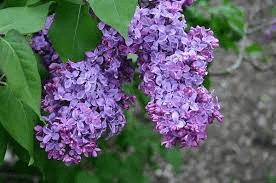
1. Respiratory Health: Lilac, with its aromatic flowers, has been traditionally associated with respiratory health, potentially aiding in conditions like colds and congestion.
2. Anti-Inflammatory Effects: Compounds like flavonoids in Lilac may contribute to anti-inflammatory effects, supporting overall well-being.
3. Skin Health: Lilac extracts may have benefits for the skin, potentially assisting in conditions like acne or irritation.
4. Antioxidant Properties: The presence of anthocyanins and other antioxidants in Lilacs may help combat oxidative stress in the body.
5. Relaxation and Stress Relief: The fragrance of Lilacs is known for its calming effects, contributing to stress relief and relaxation.
6. Antimicrobial Action: Lilac extracts may exhibit antimicrobial properties, potentially aiding in the fight against certain microbes.
7. Digestive Support: Traditionally, Lilac has been used for digestive support, with potential benefits for gastrointestinal health.
8. Anti-Anxiety Effects: The calming aroma of Lilacs may have mild anti-anxiety effects, contributing to mental well-being.
9. Pain Relief: Lilac’s potential anti-inflammatory properties may offer relief from mild pain and discomfort.
10. Immune System Boost: Compounds in Lilacs may support the immune system, enhancing the body’s natural defense mechanisms.
11. Allergy Relief: Some individuals find relief from allergy symptoms through the use of Lilac extracts, potentially due to its anti-inflammatory effects.
12. Cardiovascular Health: Antioxidant compounds in Lilacs may contribute to cardiovascular health by reducing oxidative stress.
13. Antispasmodic Effects: Lilac has been traditionally used for its antispasmodic properties, potentially assisting in muscle relaxation.
14. Headache Relief: The calming effects of Lilac fragrance may contribute to headache relief in some individuals.
15. Menstrual Health Support: Traditionally, Lilac has been associated with women’s health, potentially providing support during menstrual cycles.
16. Anti-Aging Properties: The antioxidant-rich profile of Lilac may have implications for skin health and anti-aging benefits.
17. Sleep Aid: The calming aroma of Lilacs may contribute to improved sleep quality, aiding individuals in relaxation before bedtime.
18. Cognitive Function: Preliminary research suggests potential benefits for cognitive function and mental clarity.
19. Joint Health: Lilac’s anti-inflammatory effects may extend to supporting joint health, providing relief for conditions like arthritis.
20. Overall Well-being: The combination of these potential benefits makes Lilac a holistic choice for individuals seeking overall well-being and natural health support.
The Methods of Usage to Achieve the Provided Health Benefits Of Lilac (Syringa vulgaris)
1. Aromatherapy: Harness the calming effects of Lilac by using essential oils in aromatherapy diffusers.
2. Lilac Tea: Prepare Lilac tea by steeping fresh or dried flowers for respiratory and digestive health.
3. Skin Tinctures: Create skin tinctures using Lilac extracts for potential benefits on skin health.
4. Lilac-infused Oils: Craft oils infused with Lilac for topical applications, such as massages or skin treatments.
5. Culinary Uses: Incorporate Lilac flowers into culinary creations, adding a touch of flavor and potential health benefits.
6. Lilac Baths: Add Lilac extracts to bathwater for a relaxing and potentially skin-nourishing experience.
7. Herbal Compresses: Apply Lilac-infused compresses for localized relief, such as on joints or sore muscles.
8. Lilac Sachets: Enjoy the fragrance of Lilacs by creating sachets for placement in closets or drawers.
9. Lilac-Infused Honey: Infuse honey with Lilac for a sweet and potentially health-supportive addition to your diet.
10. Lilac Potpourri: Create potpourri with Lilac flowers for a fragrant and decorative element in your living spaces.
The Side Effects Of Using Lilac Medicinal Plant
1. Allergic Reactions: Individuals with allergies may experience reactions to Lilac, such as skin irritation or respiratory discomfort.
2. Gastrointestinal Discomfort: Excessive consumption of Lilac tea may lead to digestive issues in some individuals.
3. Photosensitivity: Some individuals may experience increased sensitivity to sunlight after topical application of Lilac-infused products.
4. Pregnancy and Breastfeeding: Pregnant or breastfeeding individuals should exercise caution and consult healthcare professionals before using Lilac medicinally.
5. Drug Interactions: Lilac supplements or extracts may interact with certain medications; consult with healthcare providers for guidance.
6. Skin Sensitivity: Conduct a patch test before using Lilac-infused products topically to check for skin sensitivity.
7. Internal Use Caution: Internal use of Lilac products should be done in moderation, and dosages should be adhered to.
8. Respiratory Sensitivity: Individuals with respiratory conditions may experience sensitivity to Lilac aromas; use with caution.
9. Headache Trigger: While Lilac fragrance may relieve headaches in some, it could potentially trigger headaches in others.
10. Potential Nausea: Excessive Lilac tea consumption may lead to nausea in sensitive individuals.
11. Blood Pressure Effects: Lilac’s potential calming effects may influence blood pressure; monitor if hypertensive.
12. Drowsiness: The calming properties of Lilac may induce drowsiness; avoid activities requiring alertness after use.
13. Stomach Upset: Some individuals may experience stomach upset after consuming Lilac products; moderate use is advised.
Read Also: 17 Medicinal Health Benefits Of Guggul (Commiphora wightii)
The Scientific Research and Studies of Lilac
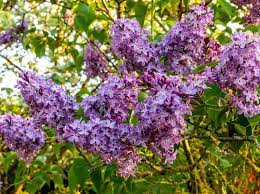
1. Antioxidant Properties: Scientific studies explore Lilac’s antioxidant capacity, emphasizing its potential health benefits.
2. Anti-Inflammatory Effects: Research delves into Lilac’s anti-inflammatory compounds and their implications for health.
3. Respiratory Health Benefits: Studies investigate Lilac’s traditional uses in promoting respiratory health.
4. Antimicrobial Properties: Scientific inquiries explore Lilac’s antimicrobial potential, especially in addressing skin conditions.
5. Cognitive Function Studies: Preliminary research examines Lilac’s effects on cognitive function and mental clarity.
6. Cardiovascular Health Research: Studies explore how Lilac’s antioxidant properties contribute to cardiovascular health.
7. Analgesic Effects: Scientific investigations focus on Lilac’s potential as a natural pain-relieving agent.
8. Anti-Anxiety Effects: Research explores Lilac’s calming effects and its potential applications in anxiety management.
9. Dermatological Studies: Scientific studies investigate Lilac’s impact on skin health and potential benefits for various dermatological conditions.
10. Immunomodulatory Action: Research suggests that Lilac may modulate the immune system, enhancing its responses.
11. Antispasmodic Properties: Scientific studies explore Lilac’s potential antispasmodic effects, particularly in muscle relaxation.
The Safety Precautions and Recommendations In Using Lilac Medicinal Plant
1. Allergy Testing: Individuals should conduct allergy tests before using Lilac products to identify potential sensitivities.
2. Dosage Adherence: Adhere to recommended dosages for Lilac products to avoid adverse effects.
3. Sun Protection: Individuals using Lilac-infused products topically should employ sun protection due to potential photosensitivity.
4. Consultation with Healthcare Professionals: Pregnant, breastfeeding individuals, or those on medication should consult healthcare professionals before using Lilac medicinally.
5. Gradual Introduction: Introduce Lilac products gradually to assess individual tolerance, especially for internal use.
6. Monitoring Blood Pressure: Individuals with hypertension should monitor blood pressure due to Lilac’s potential calming effects.
7. Respiratory Conditions Caution: Individuals with respiratory conditions should use Lilac aromas with caution.
8. Discontinuation of Use: Discontinue Lilac usage if adverse effects like nausea, skin irritation, or headaches occur.
9. Internal Use Moderation: If using Lilac internally, do so in moderation to prevent potential gastrointestinal discomfort.
10. Cautious Use in Children: Exercise caution when using Lilac products on children, and consult healthcare professionals for appropriate dosages.
11. Pregnancy and Breastfeeding Caution: Pregnant or breastfeeding individuals should use Lilac with caution, and professional advice is recommended.
12. Skin Patch Testing: Conduct a skin patch test before using Lilac-infused products topically to avoid skin sensitivity issues.
FAQs About Lilac Medicinal Plant
1. Is Lilac Safe for Pregnant Women?
Lilac should be used with caution during pregnancy, and consultation with healthcare professionals is advised.
2. Can Lilac Be Used Topically for Skin Issues?
Lilac extracts may have benefits for the skin, but a patch test is recommended to check for skin sensitivity.
3. Are There Any Allergic Reactions to Lilac?
Some individuals may experience allergic reactions to Lilac; conduct an allergy test before use.
4. How Can Lilac Tea Benefit Respiratory Health?
Lilac tea has traditionally been associated with respiratory health, potentially aiding in conditions like congestion.
5. Can Lilac Products Be Used on Children?
Lilac products should be used cautiously on children, and professional advice is recommended.
6. Can Lilac Aromatherapy Help with Anxiety?
Lilac aromatherapy may have mild anti-anxiety effects, contributing to relaxation.
7. How Long Does It Take to Experience Health Benefits from Lilac?
Individual responses vary; consistent use over time is often recommended for noticeable effects.
8. Can Lilac Be Used for Cardiovascular Health?
Lilac’s antioxidant properties may contribute to cardiovascular health by reducing oxidative stress.
9. Can Lilac Be Used for Pain Relief?
Lilac’s potential anti-inflammatory effects may offer relief from mild pain and discomfort
10. How Should Lilac Products Be Stored?
Lilac products, especially oils and extracts, should be stored in a cool, dark place to preserve their potency and fragrance.
11. Can Lilac Be Used for Culinary Purposes?
Lilac flowers can be used in culinary creations, adding a subtle floral flavor to dishes and beverages.
12. Are There Any Interactions Between Lilac and Medications?
Lilac supplements or extracts may interact with certain medications; consult healthcare providers for guidance to avoid potential interactions.
13. Is Lilac Safe for Individuals with Respiratory Conditions?
Individuals with respiratory conditions should use Lilac aromas with caution and seek medical advice if needed.
14. Can Lilac Help with Allergies?
Some individuals find relief from allergy symptoms through the use of Lilac extracts, potentially due to its anti-inflammatory effects.
15. How Can Lilac be Incorporated into Daily Life?
Lilac can be incorporated into daily life through aromatherapy, teas, or by adding its flowers to recipes for both flavor and potential health benefits.
16. Can Lilac Be Used as a Natural Perfume?
Lilac’s captivating fragrance makes it a natural choice for a botanical perfume, providing a subtle and pleasing scent.
17. Can Lilac Be Used for Mental Well-being?
Lilac’s calming effects may contribute to mental well-being, promoting relaxation and stress relief.
Read Also: Estimating Waste-water Flow Rates from Water Supply Data

